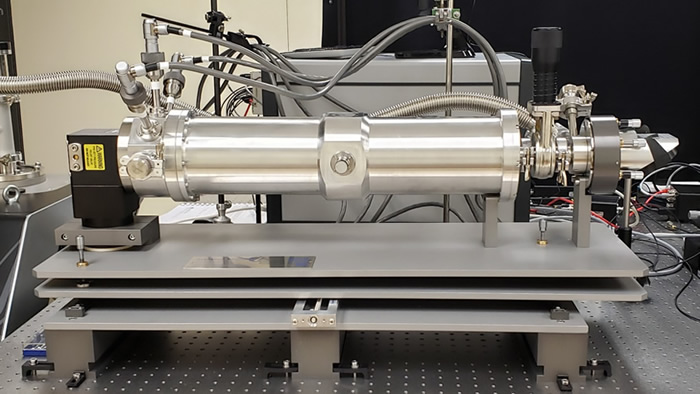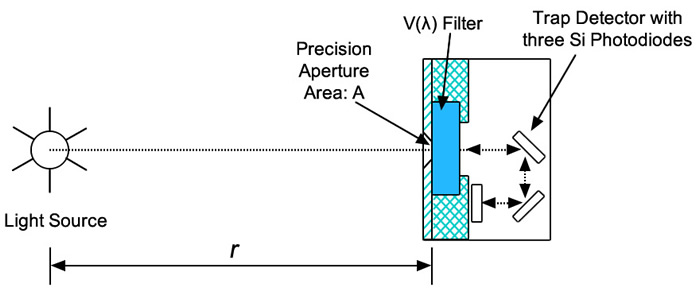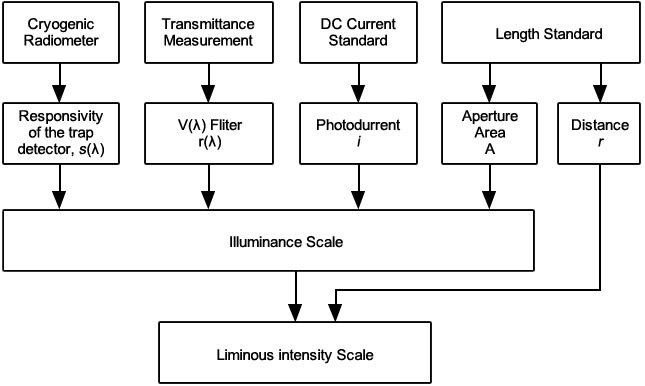Cryogenic Radiometer
Primary Standard for candela realization – cryogenic radiometer
 Photo of the SCL cryogenic radiometer
Photo of the SCL cryogenic radiometer
The SCL cryogenic radiometer is an absolute radiometer that measures the amount of incident optical radiation by direct reference to electrical units based on electrical substitution method. The electrical substitution method equates the amount of heat generated by optical radiation with that resulting from a substituted electrical power. The operating temperature of the radiometer is cooled to cryogenic temperatures (at about 15 K) to improve the system sensitivity and to reduce the uncertainties contributed from radiative and convective losses.
At SCL, the primary realization of SI base unit of luminous intensity is realised by using a reference trap photometer based on the detector based method. The traceability of reference trap photometer is maintained through several parameters, including spectral responsivity of trap detector, transmittance of V(λ) filter, area of precision aperture, output current of the trap detector and the distance between the light source and the photometer. The cryogenic radiometer is used to calibrate the spectral responsivity of the laboratory's trap detectors, which established the traceability of the photometric and radiometric quantities to the SI units.
 Illustration of detector based candela realization
Illustration of detector based candela realization
 Traceability chart for the realization of the luminous intensity scale
Traceability chart for the realization of the luminous intensity scale
Reference
- Mise en pratique for the definition of the candela and associated derived units for photometric and radiometric quantities in the International System of Units (SI), prepared by the CCPR Working Group on Strategic Planning Task Group 5.